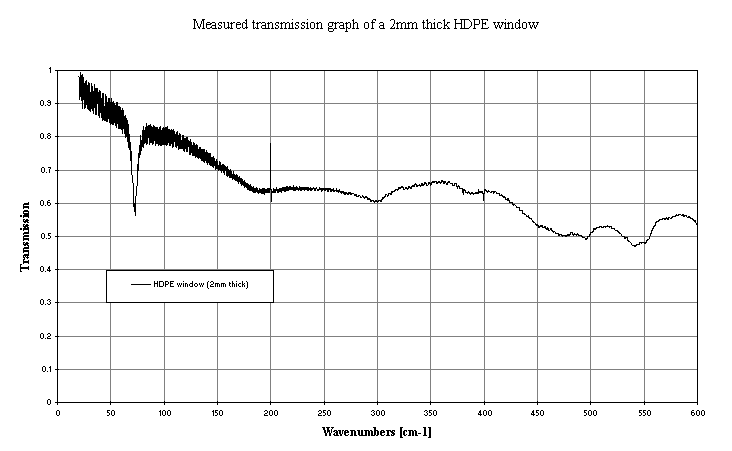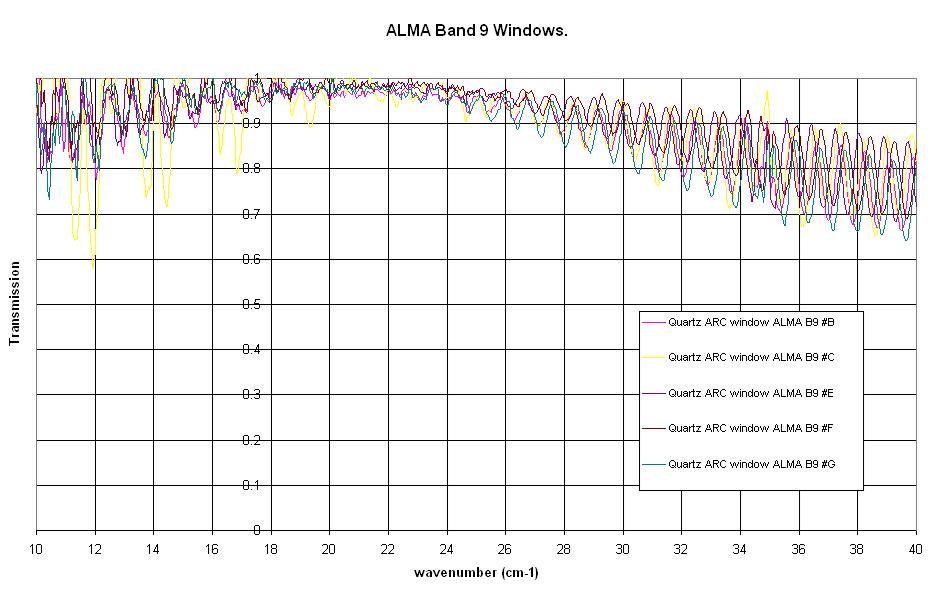Optical windows
We can offer optical windows in
Click on a material above for further information.
Polyethylene
We can supply windows in high density polyethylene (HDPE) with standard dimensions (these are used in our cryogenic detector systems):
- Thickness 1.7 mm
- Diameter 49.9 mm or 37.9 mm
We can also supply HPDE windows and lenses to your specification, along with anti-reflection / reflection coatings applied. Please contact us with your requirements.
The measured transmission of a 2mm thick HDPE window from 20 cm-1 to 600 cm-1 is shown below. The polyethylene characteristic absorption increase is clearly seen around 73 cm-1.

Quartz
Optically, quartz is commonly used in the IR and mm wave regions of the spectrum as a vacuum window on instrumentation. Anti-reflection coatings (ARC) to maximise transmission, and reflection coatings to maximise reflection, are often applied to the quartz. An example of recent work in this area is the production of anti-reflection coated quartz windows for the various frequency bands for the Atacama Large Millimetre Array in Chile. The window frequencies range from 31.3GHz (9.6mm) to 950GHz (0.3mm).
ALMA band 9 602GHz (20cm-1) to 720GHz (24cm-1) ARC quartz vacuum window transmission is shown below.

The mineral quartz, which is a form of crystalline silicon dioxide, is the second most prevalent in the continental crust. Despite this abundance, optical grade naturally occuring quartz is rarely available, and when it is it is very expensive. Hence synthetic quartz, produced in an autoclave, is predominantly used in industry. Quartz is birefringent and the z-axis is the optic axis of quartz. This z-cut quartz is is commonly used in optical applications.
KRS5
KRS5 (thallium bromo-iodide) is a commonly used material for optics in the infrared. Optical transmission is about 70% from 0.7 um (14 300 cm-1) to 0.03 mm (30 0cm-1). This window can be used where shorter wavelength (higher wave number) signals are used and the standard HDPE window absorption increases. This material is toxic and should therefore be handled appropriately.
Edited May11